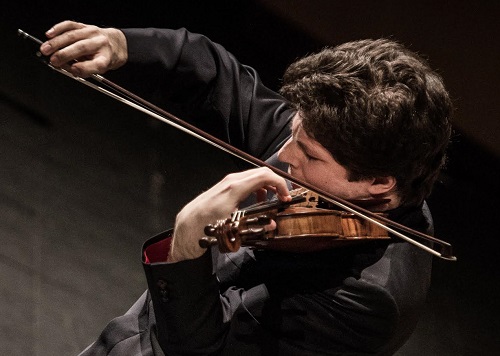 United States Debussy, Janáček, Beethoven: Augustin Hadelich (violin), Seattle Symphony Orchestra / Ludovic Morlot (conductor), Benaroya Hall, Seattle, 22.9.2018. (ZC)
United States Debussy, Janáček, Beethoven: Augustin Hadelich (violin), Seattle Symphony Orchestra / Ludovic Morlot (conductor), Benaroya Hall, Seattle, 22.9.2018. (ZC)

Debussy – ‘Gigues’ and ‘Rondes de printemps’ from Images
Janáček – Suite from The Cunning Little Vixen
Beethoven – Violin Concerto in D major Op.61
The Seattle Symphony’s 2018-2019 season is the last for Ludovic Morlot, who is moving on after eight successful and innovative years at the helm of Gramophone’s 2018 Orchestra of the Year. For his first subscription concert of the new season, Morlot juxtaposed short, emotive works by Debussy and Janáček with Beethoven’s towering Violin Concerto. Augustin Hadelich, a brilliant young violinist who has dazzled audiences and forged a creative bond to the city, joined the orchestra as the soloist.
In his program notes, Morlot wrote that the concert’s intent is to explore Debussy’s creative connections to other composers and their works, and the conductor chose ‘Gigues’ and ‘Rondes de printemps’ from Images to open the concert. The movements drift through vaguely nostalgic, English soundscapes to a Gallic-inspired spring triumph. The melancholy oboe d’amore, not typically featured in symphony orchestras, sets the mood for ‘Gigues’, while the woodwind section anchors the French sound of ‘Rondes’. Color, texture and fragmented ideas are the essence of Debussy, and the orchestra’s detailed execution showcased the improvements they have made with Morlot’s leadership.
The orchestra was also outstanding in Janáček’s Suite from The Cunning Little Vixen. Conductor Václav Talich’s arrangement of the opera’s orchestral bits is a vivid and appropriate introduction to the composer’s work, and Morlot made a masterful guide. Springy rhythms popped effortlessly, while Moravian allusions and bright colors washed over the audience. Together, the orchestra etched a musical picture of natural bliss that alluded perfectly to the Debussy heard earlier.
Beethoven’s Violin Concerto established dimensions of sound, ambition, and virtuosity that Romantic composers would later employ so effectively. Like much of Beethoven’s output, it is a revolution of both concept and form. Compared to the impressionism of the first half, the concerto, as a piece, sounded dated. A lengthy, thoroughly developed first movement can exhaust a listener’s patience before the enchanting second movement and brisk finale.
Augustin Hadelich, the supremely talented soloist, offered plenty of drama and sensitivity to jolt and fix listeners’ attention. The concerto opens with four soft portentous beats on the timpani — the elements from which Beethoven constructs his opus. Hadelich built on this motif with such precision that every note, phrase, and grand Beethovenian idea oozed freshness.
The violinist led the first movement’s lengthy rumination purposefully until orchestra and soloist reached the movement’s cadenza — in which Hadelich achieved a technical standard that might have seemed icy to some. For me, it was a marvelous survey of details often lost in typical readings of the Kreisler cadenza. In the tranquil second movement, each variation was shaped with affection and absolute command. The movement dissipated into deafening quiet before Hadelich and Morlot snapped forward into a rollicking rondo. As an encore to these revelations, the violinist offered Paganini’s Caprice No.24.
Zach Carstensen